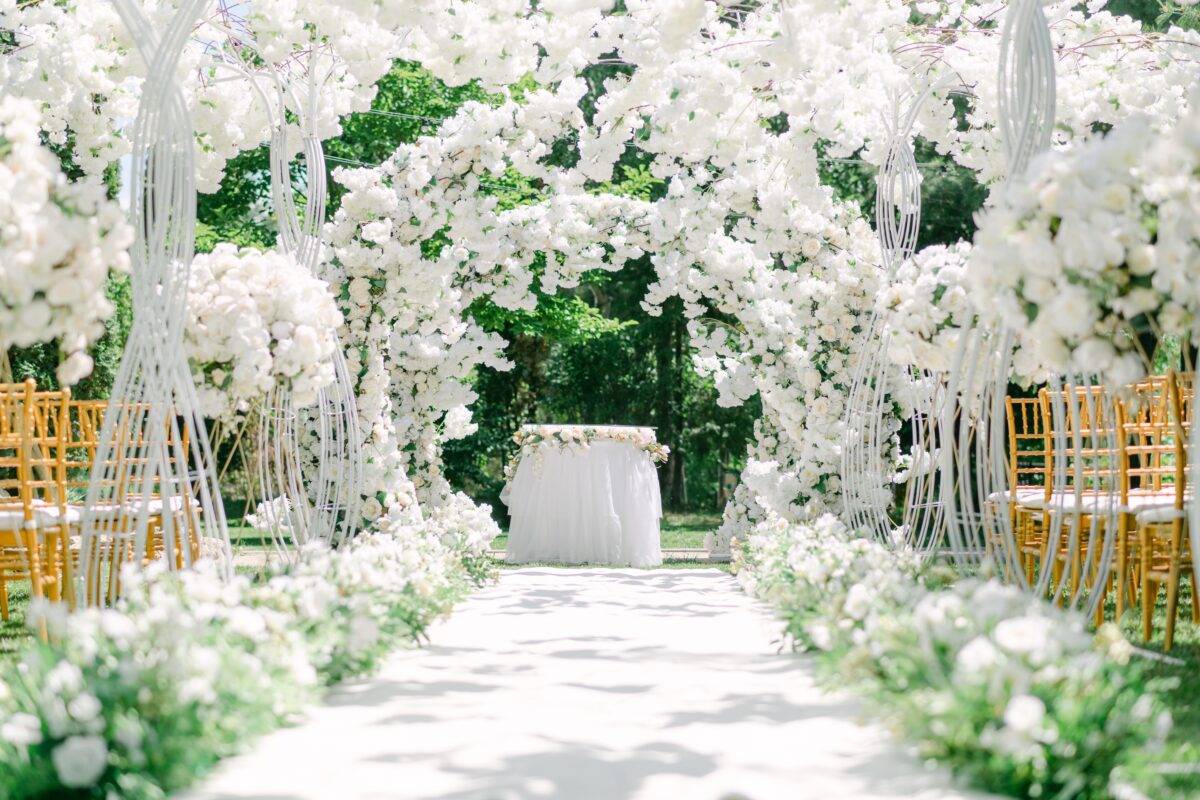Weddings are lovely, but they may generate a lot of garbage and pollution. As couples become more eco-conscious, sustainable weddings are growing. Many couples in 2024 want to make their wedding eco-friendly and memorable. We’ll discuss six major elements of the sustainable wedding trend and offer green wedding planning suggestions in this blog.
1. Green Venues
Venue selection is key to a sustainable wedding. Couples are increasingly choosing eco-friendly places with a small ecological footprint.
Eco-conscious couples love botanical gardens, vineyards, and wildlife reserves. These settings’ natural beauty and ambiance lessen the need for excessive decorations. Additionally, they generally have environmental policies.
Green Buildings: Couples want LEED-certified indoor celebration locations. Designed for energy efficiency, water conservation, and sustainable materials, these facilities reduce environmental impact.
Local Venues: Local venues cut travel emissions. Hosting the wedding near home or at a venue accessible to most guests reduces transportation emissions.
2. Eco-friendly catering
Weddings revolve around food and drink, and sustainable catering can reduce the event’s environmental effect. To make eco-friendly meals, couples prioritize local, organic, and seasonal ingredients.
Farmers-to-Table: Farm-to-table catering emphasizes local, organic food and sustainable proteins. Supporting local farmers minimizes the carbon footprint of long-distance food transit. Fresh and tasty ingredients are also guaranteed by seasonal menus.
Another approach to lessen the wedding’s environmental effect is to serve plant-based or vegetarian/vegan food. Plant-based diets are more sustainable than meat-heavy ones since they utilize fewer resources and emit fewer greenhouse gases.
Waste Reduction: Couples arrange properly portioned dinners and engage with sustainable caterers to reduce food waste. Giving leftover food to shelters or food banks is a significant method to reduce waste.
3. Sustainable Invitations and Stationery
Traditional wedding invitations and stationery waste a lot of paper.Couples can create beautiful, memorable invites while reducing their environmental effect with sustainable alternatives.
Digital invites and RSVPs save paper and postage, making them eco-friendly. Many internet platforms offer customisable digital invitations that may be shared via email or social media.
For couples who prefer physical invites, recyclable or plantable paper with seeds is a sustainable option. These eco-friendly materials cut virgin paper use and give guests a unique touch.
Soy-based inks and waterless printing can further lessen the environmental impact of wedding stationery. Local printers that prioritize sustainability are another option to support eco-friendly enterprises.
4. Green Wedding Wear
From the bride’s dress to the groom’s suit, wedding apparel may be stylish and sustainable. Couples are becoming more environmentally conscious and choosing eco-friendly wedding attire.
Vintage and Second-Hand: Wearing a vintage or used wedding dress reduces waste and promotes sustainability. Many bridal boutiques provide distinctive and affordable pre-loved gowns that have been elegantly refurbished.
Sustainable Fashion: Many designers use eco-friendly materials and ethical production practices. These designers can help brides and grooms choose eco-friendly wedding apparel.
Wedding apparel that can be reused is another ecological option. Brides and grooms can choose dresses and clothes for future celebrations. This method maximizes bridal clothing use and reduces waste.
5. Sustainable Decorations
Wedding decorations can be wasteful, but sustainable options can help. Couples are choosing eco-friendly decor to reflect their ideals and create a memorable setting.
Reusable and Rentable Decor: Renting dinnerware, linens, and furniture lowers waste and costs. Rental companies have many products for different wedding themes and styles.
Decorations made of wood, stone, and flowers are eco-friendly. Compostable tableware and recyclable paper or fabric decorations are also trendy.
DIY & Upcycled Decor: Upcycling materials for wedding decorations adds a personal touch and reduces waste. Couples can reuse or repurpose items to reduce their need for new purchases.
6. Eco-Honeymoons
Sustainability affects honeymoon planning as much as wedding preparations. Green honeymoons are growing more popular as couples seek destinations and activities that correspond with their ideals.
In 2024, eco-friendly places that prioritize sustainability are popular. Many resorts and hotels are now environmentally certified, offering eco-lodges, organic cuisine, and conservation programs.
Traveling locally for a honeymoon decreases the carbon burden of long-distance travel. Explore surrounding natural wonders, national parks, or lovely villages for romance and environmental sustainability.
Sustainable Activities: Honeymooners want eco-friendly activities. Hiking, animal watching, kayaking, and environmental volunteering are examples. Start married life with meaningful sustainable travel experiences that protect the earth.
Sustainable weddings represent an increasing awareness of traditional weddings’ environmental impact and a desire to create attractive, eco-friendly gatherings. Couples are using eco-friendly locations, cuisine, and wedding apparel and decorations to save waste and carbon emissions.
Couples can make their wedding memorable and in line with their values by adopting these sustainable practises. The trend toward sustainable weddings is likely to rise, inspiring more couples to adopt eco-friendly decisions and setting a good example for future generations.
These trends can help you plan or attend a wedding that’s truly memorable and reflects a commitment to a greener, more sustainable future.



